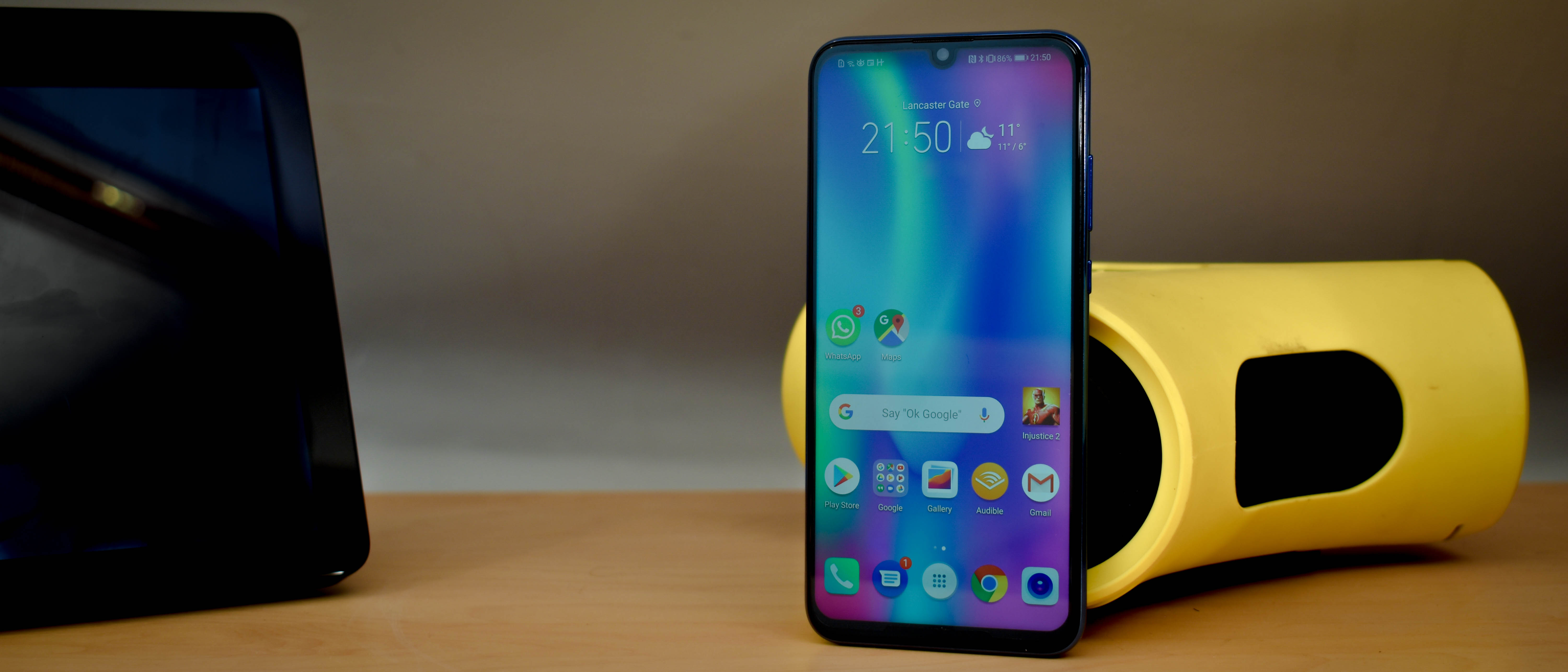Why you can trust TechRadar
User interface
- Latest version of Android
- Huawei/Honor EMUI 9 UI
- Highly customizable
Off the bat, the fact that the Honor 10 Lite runs Android 9 is a good thing. It’s the latest version of Android, so brings with it the benefits of a customized digital wellbeing center, as well as battery and app management tools.
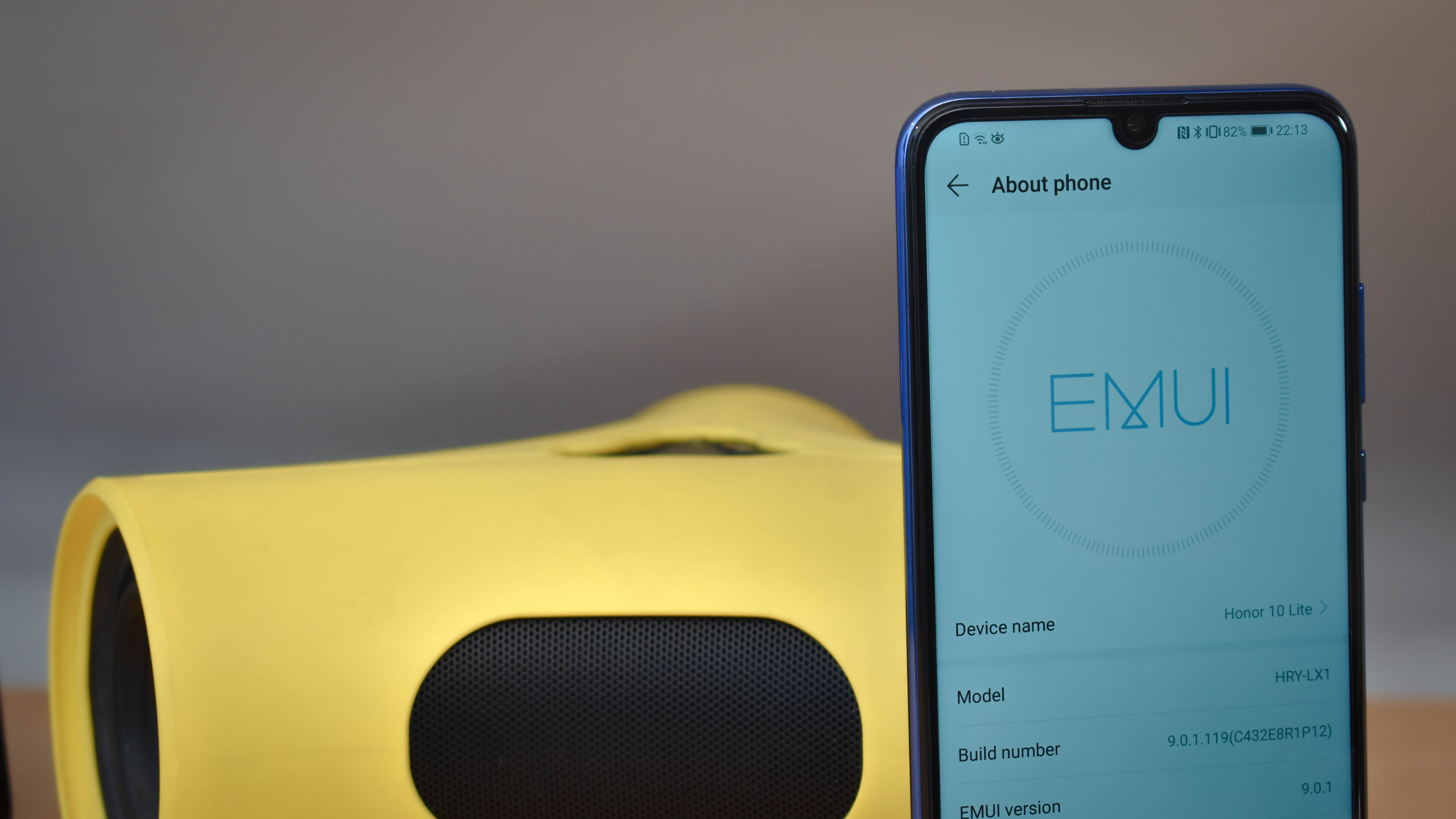
Huawei customizes Android with EMUI, and the 10 Lite features version 9, as introduced on the Mate 20 Pro. It’s the cleanest version of the UI to date, is easy to get to grips with and features plenty of tools for tinkerers to get stuck into.
With home screens and a notification bar that can be pulled down, key elements will be familiar to Android and iOS users.
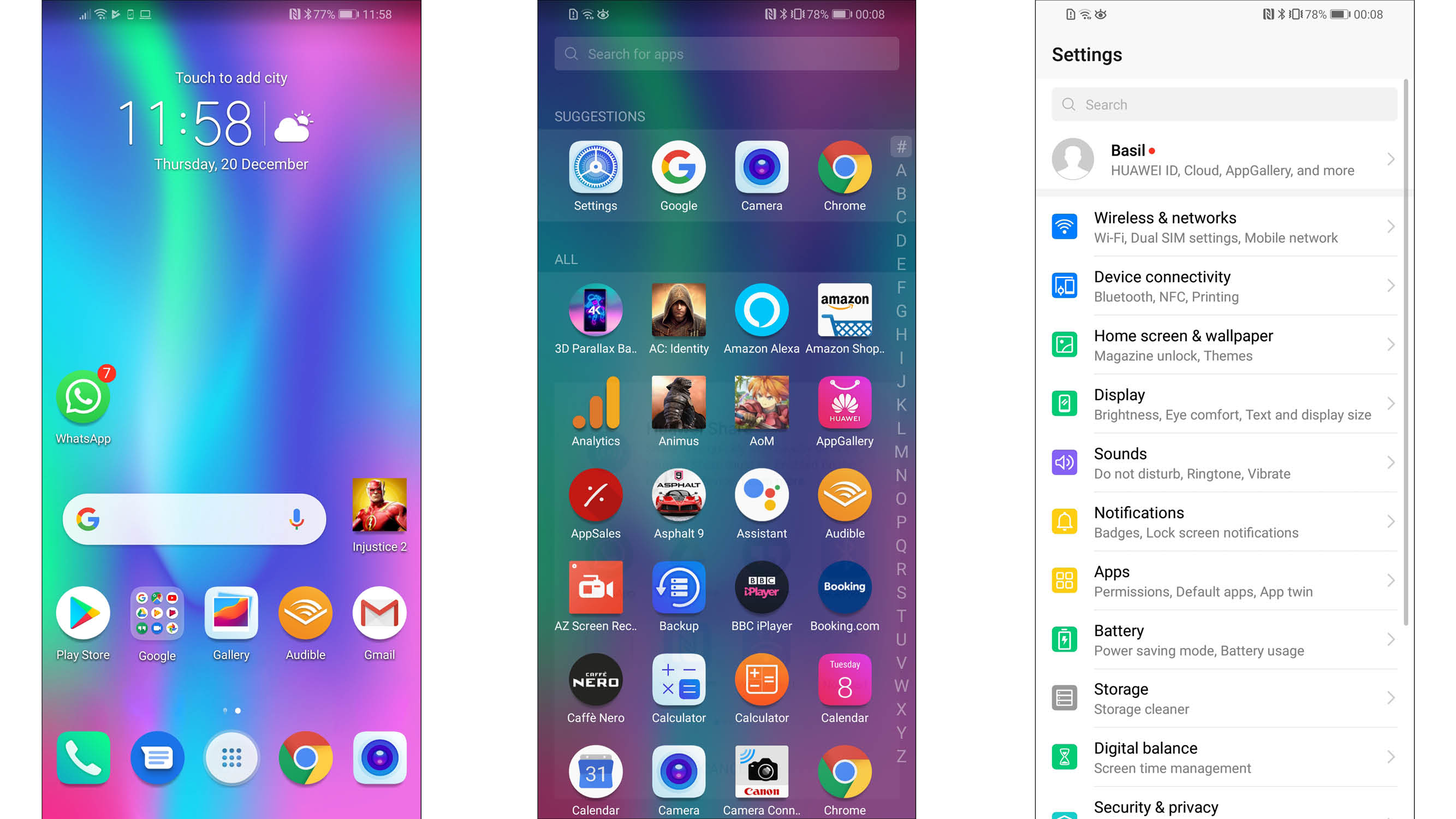
While there isn’t an applications tray by default, you can activate one in the settings. You can also hide the navigation bar, so that the on-screen back, home and recent apps buttons are hidden, and their functions can then be activated by gestures.
If all of this sounds like overkill, don’t worry – it’s all optional. Out of the box, everything works fine without any tweaking.
In turn, while Huawei and Honor phones aren’t great for stock Android fans, they are versatile, and offer a ridiculous amount of scope for geeks to go crazy and customize their phones without the need to hack into them.
Performance, storage and connections
- Kirin 710 processor
- 3-6GB RAM depending on region
- 64GB storage plus SD card support
As mentioned, the Honor 10 Lite uses the Kirin 710 CPU, combined with 3GB of RAM and 64GB storage. There are also 4GB and 6GB RAM versions available, although these won’t be available in the UK.
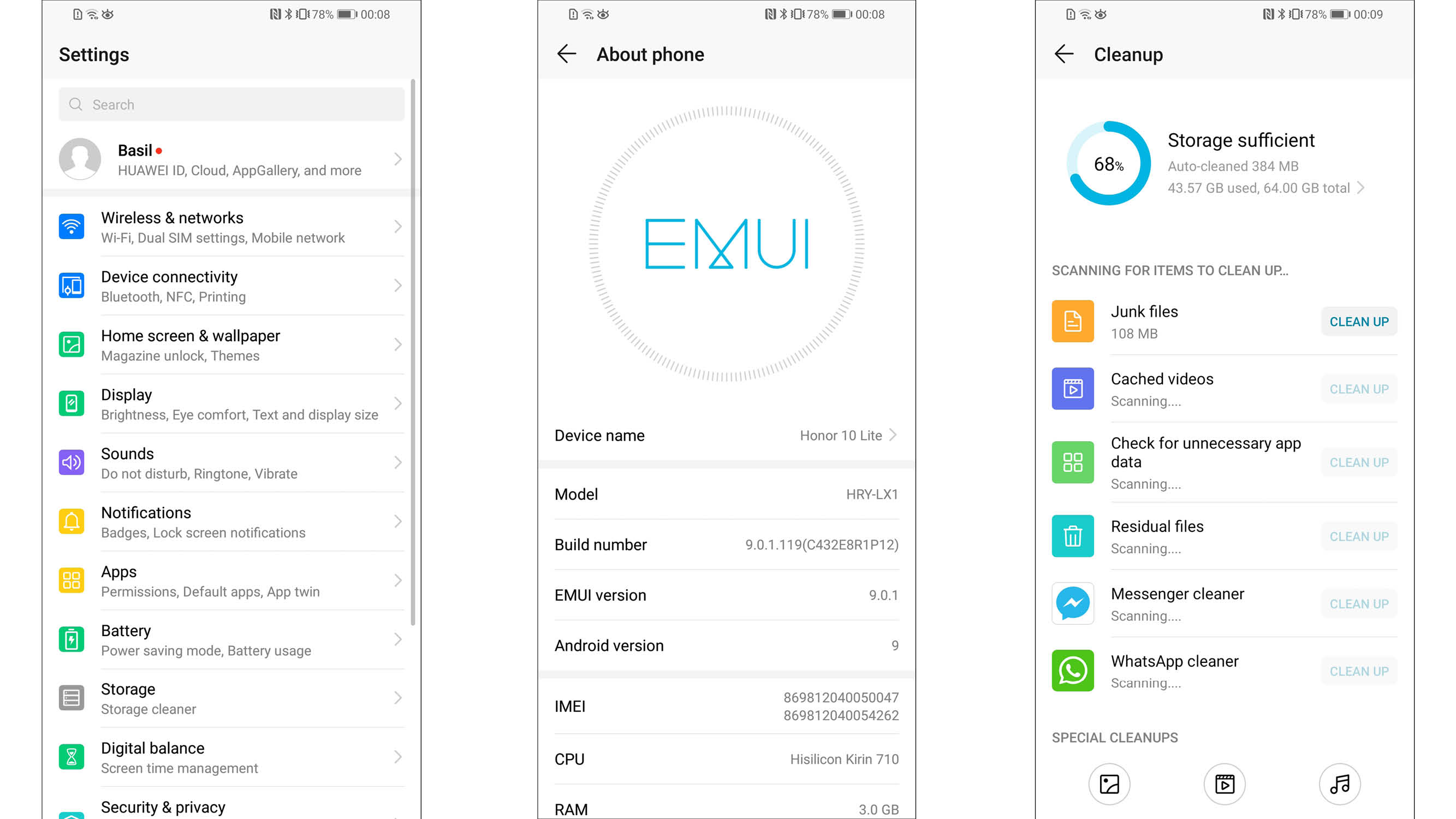
Performance limitations were probably the aspect that showcased the 10 Lite’s mid-range positioning in our time with the phone. It’s good, but we definitely noticed that it held us back when we jumped between power-hungry apps and games.
Injustice 2, for example, installed with no issues, and on occasion looked really good. However, is was obvious to us when the phone was doing other stuff in the background while we were playing, as the frame rate would drop and lag would ensue, with a couple of instances of freezing to the point where we’d lose the game – obviously it was through no fault of our own.
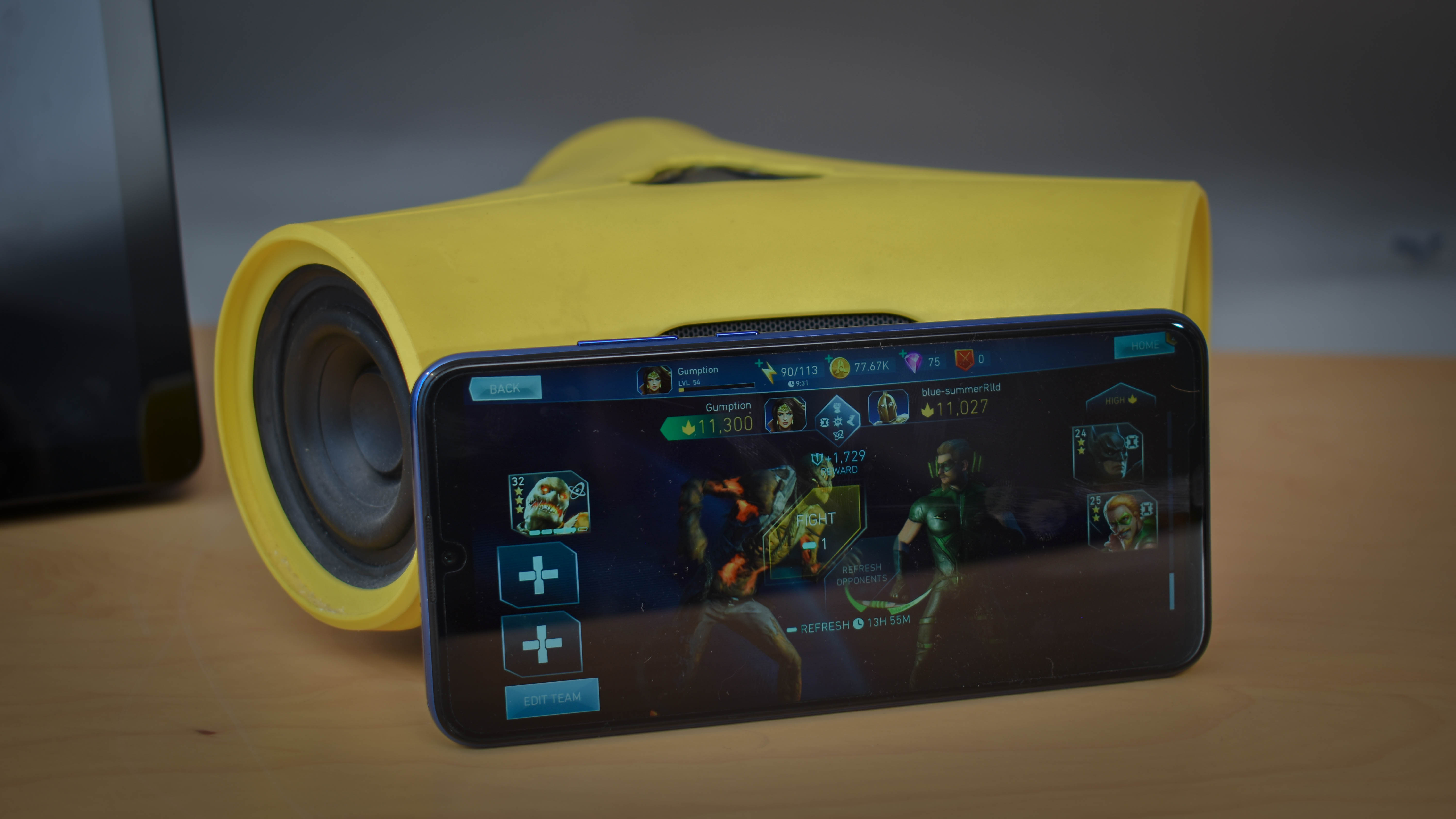
Basic 3D games are handled fine, though, and provided that you’re okay with the occasional wait of a second or two when jumping from one app to another, the Honor 10 Lite’s speed won’t frustrate you much.
There’s a phone optimizer, which does seem to help clean things up and make everything run a little smoother, and thanks to a great storage manager in the settings – one that’s more complete than Google’s stock version – it’s easy to optimize storage too.
On the subject of storage, 64GB coupled with microSD card support of up to 512GB is excellent for a phone this price.
Connectivity is also great, with 4G, NFC and Bluetooth 4.2 on board. The micro USB port is a telltale sign that this is definitely not a flagship phone – a USB-C port would have been preferable, although we can’t recall a phone that costs less and features one, so it’s perfectly excusable.
Current page: UI, performance and battery
Prev Page Price, design and screen Next Page Battery and cameraBasil Kronfli is the Head of content at Make Honey and freelance technology journalist. He is an experienced writer and producer and is skilled in video production, and runs the technology YouTube channel TechEdit.
